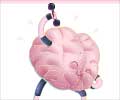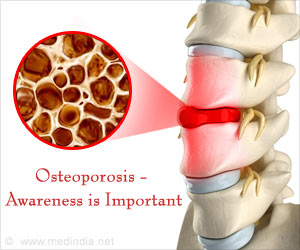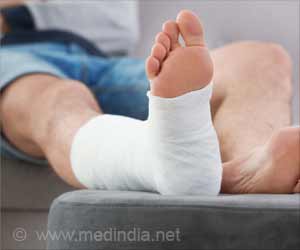A discovery by US scientists could help develop drugs that could make up for the inability of osteoporosis patients to exercise.
A discovery by US scientists could help develop drugs that could make up for the inability of osteoporosis patients to exercise.
They have discovered precisely how mechanical stress, such as exercise, promotes new bone growth. This opens the door to entirely new therapies that can trick bones into thinking they are getting a workout. The research report describing this advance is published online in The FASEB Journal .This research provides insight into the identification of the signaling mechanisms used by primary cilia to regulate the capacity of bone cells to sense fluid flow. This crucial information could lead to the development of new drugs that cause the same benefits to the skeleton as exercise, which would be beneficial to patients with osteoporosis.
"We believe that this study takes the field an important step forward in answering a two hundred-year-old question, 'How does bone sense mechanical loads?'" said Christopher R. Jacobs, Ph.D., co-author of the study from the Department of Mechanical Engineering at Stanford University in Stanford, CA. "Ultimately, we hope that the mechanisms identified in this study can be exploited to develop novel treatments for bone loss and perhaps a large number of other diseases involving the remarkably versatile primary cilia."
The research by Jacobs and colleagues builds on existing knowledge about the role of primary cilia (hair-like organelles that line the surfaces of some cells) on fluid flow in bone cells. When bone carries weight during physical exercise, bone cells are subjected to fluid flow, which is detected by primary cilia in bone cells. To make their discovery, the scientists studied an enzyme found in bone cells called adenylyl cyclase 6 (AC6), which is compartmentalized within the primary cilia. This enzyme inactivates very quickly in response to fluid flow, which initiates a signaling cascade that ultimately leads to increased expression of bone-forming genes. Researchers exposed bone cells to fluid flow and measured the intracellular levels of cyclic AMP, a signaling molecule synthesized by AC6, and found the levels quickly decreased after a two-minute bout of fluid flow. When scientists used RNA interference to inhibit the formation of primary cilia, as well as the production of AC6, the levels did not decrease in response to fluid flow. Results suggest that the short bout of fluid flow was sufficient to increase expression of a gene important for bone formation called cyclo-oxygenase 2. This study is one of the first to suggest that primary cilia play an important role in diseases such as osteoporosis.
"It's easy for doctors to tell osteoporosis patients that they need to get a good workout a few days each week, but the reality is that many patients are too frail to do so," said Gerald Weissmann, M.D., Editor-in-Chief of The FASEB Journal. "This ground-breaking study details the exact biochemical signals used by bone cells to turn the daily work-out into new bone. This research pinpoints new targets for drugs that will allow physicians to break this cycle of frailty, bone loss, and incapacity, so that patients can live longer, healthier, and more active lives."
The FASEB Journal (http://www.fasebj.org) is published by the Federation of the American Societies for Experimental Biology (FASEB). The journal has been recognized by the Special Libraries Association as one of the top 100 most influential biomedical journals of the past century and is the most cited biology journal worldwide according to the Institute for Scientific Information.
Advertisement
GPL











